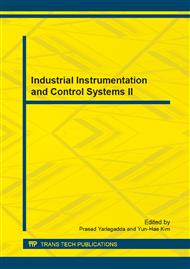p.940
p.944
p.949
p.953
p.960
p.964
p.968
p.973
p.978
An Experimental Platform Based on Transfer Learning Paradigm for Mobile Robots
Abstract:
The transfer learning paradigm promises to improve the adaptability of mobile robots which apply machine learning (ML) algorithms for perception and localization. An system framework based on transfer learning paradigm for mobile robots was proposed. The keys of the framework are 1) how to arrange the knowledge database, 2) how to select the source data, source model and priori knowledge, 3) the method to achieve the target model and 4) the method to gain new samples. An experimental platform was built up in order to gain data to verify the framework, whose underpan is the same as the Freescale Cup, MCUs core is ARM Cortex-M4, raw data is stored in a SD card and model is trained offline by a more powerful computer using ML algorithms. The MCU communicates with the powerful computer by Zigbee or WiFi. The experimental platform is cheap and feasible, which is validated by data collection and model training experiments.
Info:
Periodical:
Pages:
960-963
Citation:
Online since:
July 2013
Authors:
Keywords:
Price:
Сopyright:
© 2013 Trans Tech Publications Ltd. All Rights Reserved
Share:
Citation:


